As they use shovels to seek loved ones, survivors of a series of strong earthquakes that slammed western Afghanistan on Saturday have spent a second night sleeping among the debris of destroyed villages. Senior Taliban officials claim that the death toll is close to 3,000.
People in the regional capital of Herat slept in parks and on the streets out of concern for more shocks. Rural areas saw earthquakes on Monday with magnitudes of 5.9, 4.9, and 4.7, according to the United States Geological Survey.
“We have concerns that there may be additional casualties in that area as well,” a Taliban official said. “Our teams are currently en route to provide assistance to those affected regions.”
Hard-to-reach locations close to Herat were shaken by Saturday’s 6.3-magnitude earthquake, which was followed by eight powerful aftershocks. Rural homes were toppled, and terrified city residents fled into the streets. With the widespread withdrawal of international aid following the Taliban’s restoration to power in 2021, Afghanistan is already experiencing a humanitarian catastrophe, which has had a serious impact on its healthcare system. After prohibiting women from working for the UN and NGOs, the group also has tense relations with international humanitarian organizations.
“These past few days have been incredibly distressing. We’ve spent the last two nights in the desert, and more aftershocks keep occurring,” said Shakib, a Herat resident. “My two-year-old son is unwell, and there’s nowhere to take him for medical care.”
After officials initially estimated the death toll at 2,445, rescuers said that they had discovered an additional 350 bodies late on Sunday. Health professionals claimed they were overburdened. An employee of the Herat hospital remarked, “Vans full with dead bodies are arriving here every minute. “The large number of injuries is causing us problems. I did not count the deceased. We have reached our morgue’s capacity.
According to a Taliban official, some areas were finally being visited on Monday after the earthquake.
“The rescue operation is still in progress. Forces from the defense ministry arrived in the area this morning, and local residents are actively assisting with the operation. There are many people under rubble and areas we have not reached yet,” he said. “At least 20 villages are completely flattened, with people still under the rubble.”
Even though earthquakes frequently occur in Afghanistan, particularly in the Hindu Kush mountain region, the Taliban, who took over the nation two years ago, are unprepared to deal with such calamities.
In videos posted on social media and seen on state television, members of the Taliban’s rescue squads can be seen digging through rubble with bulldozers and guns thrown over their shoulders, possibly endangering the lives of any survivors.
“I visited a severely affected village with some of our neighbors to assist the people in need. Taliban rescue teams were using bulldozers to remove rubble and locate survivors, but their actions unintentionally put possible survivors at risk,” Fereydon, a Herat resident, said in a telephone interview.
The International Rescue Committee issued a warning that because imprisoned survivors cannot be rescued, a shortage of rescue tools could increase the number of fatalities in western Afghanistan.
The regional hospital received four ambulances, doctors, and counselors for psychosocial support from the United Nations migration agency. One of the hardest-hit districts, the Zenda Jan district, was being served by at least three mobile health teams.

People staying at a local hospital in Herat city.
The NGO Médecins Sans Frontières set up five medical tents at Herat regional hospital with capacity for up to 80 patients.
Mohammad Javad, from Koshkak village, described the severe impact on the Zenda Jan district.
“The walls crumbled in a mere two seconds, and the entire village was brought to ruins in the same amount of time,” he said from a school accommodating survivors in Herat. “I lost a family member and my neighbours have lost at least four of their loved ones. Out of the over 1,000 people of the village, it’s probable that only a quarter of them have managed to survive. It’s like a massive grave.”
Read More: https://groundzero.pk/afghanistans-earthquake-worsens-the-humanitarian-crisis/
Another survivor told the Guardian over the phone: “We haven’t received any assistance since the earthquake struck. There is nothing left here, with every house in the villages having sustained damage. My husband and I were outside when it happened, and we survived. Many people have lost their lives here.”
In June 2022, a powerful earthquake struck a rugged, mountainous region in eastern Afghanistan, flattening stone and mud-brick homes.
“People are in devastating conditions in remote places, they need food, clothes and shelter. They were already very poor people and have nothing left now,” the Taliban official said.
In Herat province, which has more than 3 million residents and is bordered by Iran, a protracted drought has devastated numerous agricultural settlements.
According to the Taliban spokesman, a large number of refugees who just arrived from Pakistan and Iran have also settled in the afflicted area.
NGOs and aid organizations have pleaded with the world community for assistance. The Taliban claim that aid from Turkey and Iran has already reached the region.
“With winter approaching, the affected areas will soon experience extremely cold conditions. Many families not only have lost their homes but also their main breadwinners. They are in urgent need of immediate aid and suitable shelters,” said the governor of Herat, Noor Ahmad Islamjar, on Sunday.


